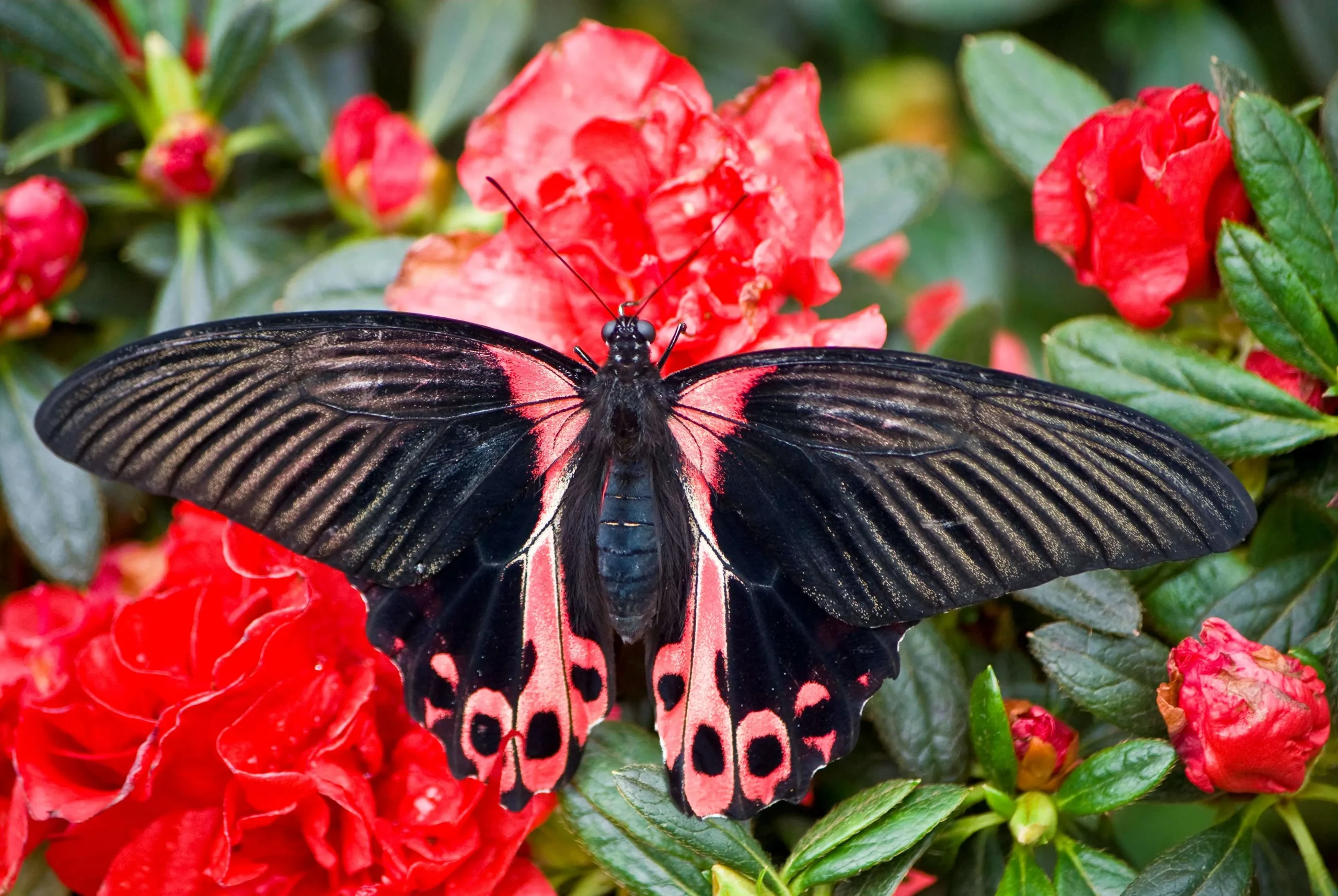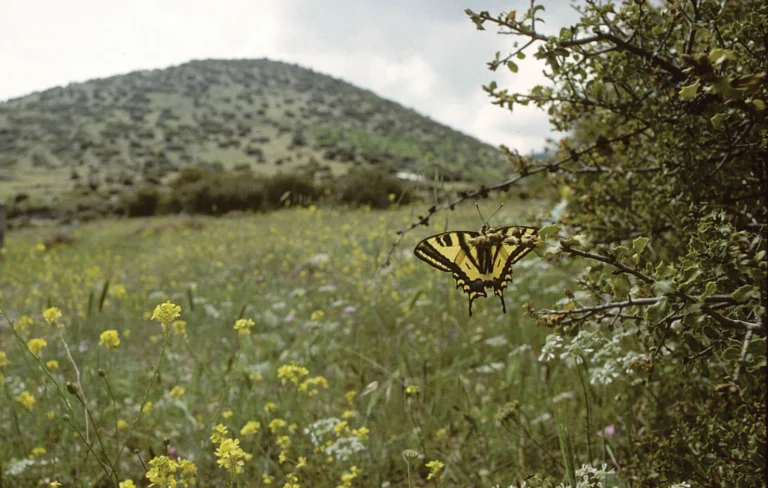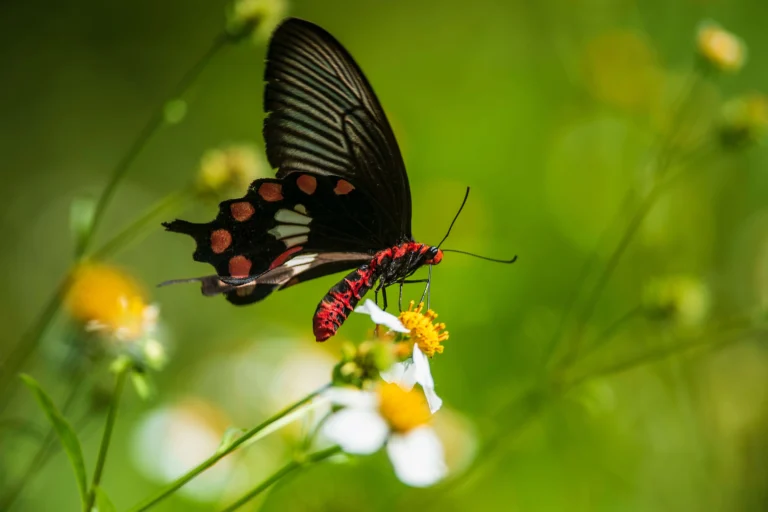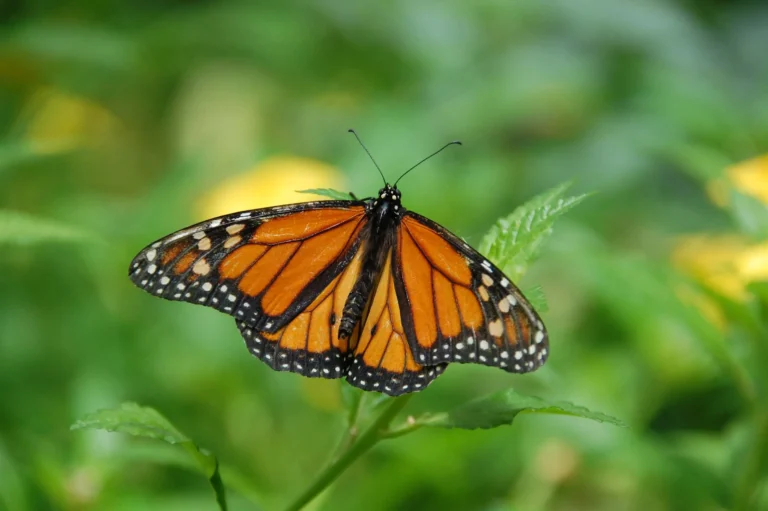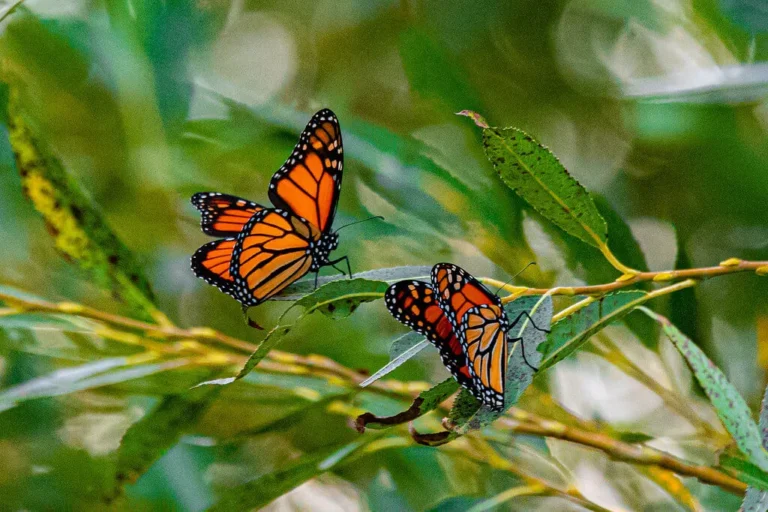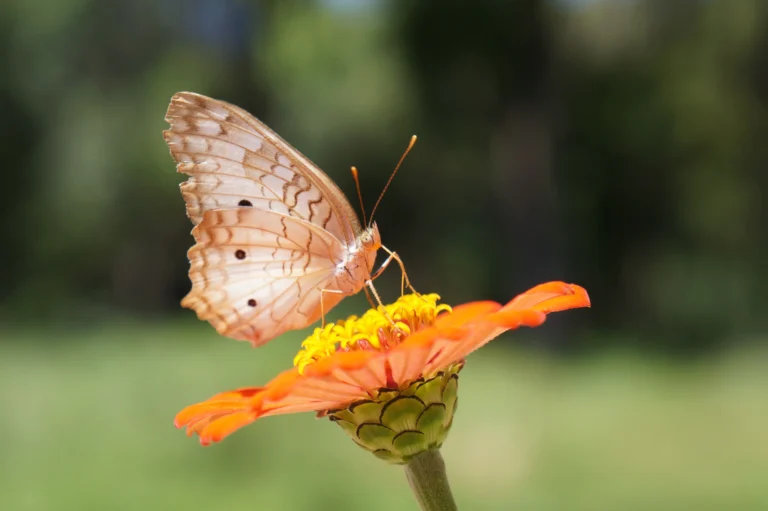Papilio Rumanzovia Butterfly Guide: Life, Habitat, Facts & More
When you think of beautiful butterflies, one name often comes up: Papilio rumanzovia. Many people also know it as the Scarlet Swallowtail. Why? Because of its bright and lovely colors.
This butterfly shines brightly in nature, capturing the hearts of those who see it. In this article, we will learn more about this amazing creature, its life, and why it’s so special.
Table of Contents
Physical Characteristics
Size and Body Structure
The Scarlet Swallowtail is of medium size, making it neither too big nor too small. It has a body that’s built perfectly for flying, with delicate but strong wings that carry it through the air.
Colors and Wing Patterns
One of the most striking things about the Papilio rumanzovia is its color. The wings boast a vibrant mix of red and black. These lively colors make it stand out, especially when it’s flying around in gardens or forests.
Tail-like Structures
If you take a closer look, especially at the back wings, there’s something unique. There are extensions that look a lot like tails. These tail-like shapes are a big reason why it’s called a ‘swallowtail’. It’s a special feature that not all butterflies have.
Life Cycle and Development
Egg: The Beginning
The life of the Scarlet Swallowtail begins as a tiny, spherical egg. These eggs are often laid on the underside of leaves, offering them some protection from predators and environmental elements.
In terms of color, they’re usually pale, blending seamlessly with their environment. This color not only provides camouflage but also protects them from the harmful rays of the sun.
Larva (Caterpillar): The Growing Phase
Once the egg hatches, a caterpillar emerges, hungry and ready to eat. This caterpillar, or larva, is initially very small. As it begins to eat, it focuses on specific host plants that provide the nutrients it needs to grow.
As the caterpillar eats and grows, it undergoes several stages called ‘instars’. With each instar, it sheds its skin, revealing a larger body underneath. These stages allow the caterpillar to expand in size and prepare itself for the next phase of its life.
Pupa (Chrysalis): The Transformation
After the caterpillar reaches its maximum size, it seeks a safe spot where it can transition into its pupa stage. This stage is all about transformation. The caterpillar attaches itself, usually to the underside of a leaf or branch, and forms a protective shell around its body called a chrysalis.
Inside this chrysalis, an incredible change takes place. Slowly, the structures of the caterpillar break down and reorganize to form the structures of a butterfly. This process is called metamorphosis. The chrysalis might look inactive from the outside, but inside, it’s a hive of activity.
Adult: The Final Form
After the metamorphosis is complete, the chrysalis starts to become transparent, revealing the butterfly inside. When the time is right, the adult Scarlet Swallowtail emerges, its wings wet and crumpled. Over the next few hours, it pumps fluid into its wings, expanding them to their full size.
Once dry, the butterfly is ready for its maiden flight. In this form, its primary goals are to find food, mate and lay eggs, thus continuing the cycle of life.
Habitat and Range
Geographical Distribution
The beautiful Scarlet Swallowtail, or Papilio rumanzovia, is often spotted in certain parts of the world. It loves regions in Southeast Asia and can be commonly found in places like the Philippines and Indonesia. These places offer the right mix of warmth and greenery that this butterfly loves.
Preferred Environment
The Scarlet Swallowtail isn’t too picky about where it lives, but it has some favorites. It loves tropical and subtropical forests where the climate is warm and moist. These forests provide plenty of food and safe places to rest and lay eggs.
You can often see them fluttering around in areas with lots of plants and flowers, sipping nectar, and enjoying the sunshine.
Climate Love
Warmth is key for Papilio rumanzovia. They prefer places where the sun shines bright, and the air is humid. This kind of climate helps them in many ways, from finding food to staying safe from the cold. That’s why they’re often found in places near the equator where it’s warm all year round.
Diet and Predation
Feeding Habits of the Scarlet Swallowtail
The world of the Scarlet Swallowtail is full of sweet treats. As an adult butterfly, its main source of food is nectar from flowers. With its long, tube-like mouth, called a proboscis, it can sip on this sugary liquid. This nectar not only gives them energy but also keeps them flying from one flower to another.
When they are in the caterpillar stage, their diet is a bit different. Caterpillars are leaf munchers. They love to eat the leaves of specific host plants, which give them all the nutrients they need to grow big and strong, preparing them for the next stages in their life.
Natural Predators and How They Stay Safe
In the wild, life isn’t always easy for the Papilio rumanzovia. They have to watch out for creatures that might see them as a tasty snack. Birds, spiders, and even some other insects can be a threat to them.
But the Scarlet Swallowtail is not defenseless. Their bright red and black colors are not just for show. These colors signal to predators that they might not be a good meal. It’s nature’s way of saying, “Stay away! I might be toxic.”
This type of protection is known as warning coloration. Even if they aren’t truly toxic, the bright colors can scare away many would-be attackers.
Behavior and Migration
Flight Patterns and Seasonality
The way the Scarlet Swallowtail moves is a dance in the air. Its flight is graceful yet unpredictable. When they’re not looking for food or a mate, they might be seen fluttering around, enjoying the warmth of the sun.
While they’re active throughout the year in tropical regions, there are times, especially during the wetter seasons, when they’re more visible. This is because the wet season is a time of growth, providing more food and opportunities to mate.
Mating Behaviors and Rituals
Love is in the air when it comes to the Papilio rumanzovia. Like many butterflies, they have unique ways to find and woo a mate. Males often set up territories, patrolling specific areas to find females.
Once they spot a potential mate, a courtship dance begins. This dance is a mix of aerial acrobatics and gentle fluttering, with the male trying to impress the female. If she’s interested, they’ll mate, ensuring the next generation of Scarlet Swallowtails.
Migration Habits
Now, the Scarlet Swallowtail, unlike some other butterfly species, doesn’t have long migration patterns. Since they primarily live in warm, tropical regions where food is available year-round, they don’t need to travel long distances.
However, they might move around locally, seeking out the best spots with plenty of food and safe places to lay their eggs.
Explore the monarch butterfly migration pattern in our detailed guide.
Significance in Culture and Symbolism
Representation in Art and Literature
The Scarlet Swallowtail, with its vibrant red and striking patterns, has not gone unnoticed by humans. Over the years, it has found its way into various forms of art and literature. Painters, poets, and writers have been inspired by its beauty.
In paintings, it’s often used as a symbol of nature’s elegance and vibrancy. In literature, it might appear in poems or stories, symbolizing transformation, freedom, or fleeting beauty.
Symbolic Meanings Across Cultures
Across different cultures, butterflies often carry deep symbolic meanings, and the Papilio rumanzovia is no exception. Due to its bright colors and graceful flight, it’s often seen as a symbol of:
- Transformation: Just like its journey from a caterpillar to a butterfly, it represents change and growth in many cultures.
- Joy and Happiness: Its vibrant colors and gentle fluttering can signify moments of happiness and the simple joys of life.
- The Soul: In some cultures, butterflies, including the Scarlet Swallowtail, represent the soul or spirit of a person.
Local Folklore
In regions where the Scarlet Swallowtail is commonly found, local tales and folklore might feature this butterfly. For instance, it could be seen as a good omen, signaling positive change or blessings. In some stories, it might be considered a messenger from the spirit world or a symbol of departed loved ones.
Differentiating from Similar Species
A World of Swallowtails
The world is full of many species of swallowtail butterflies, each with its own unique features. While the Scarlet Swallowtail (Papilio rumanzovia) stands out due to its vibrant colors, there are other swallowtails that might look similar at first glance. So, how do we tell them apart?
Key Features of Papilio rumanzovia
- Vibrant Red Wings: The Scarlet Swallowtail, true to its name, boasts wings with a radiant red hue. This is a primary distinguishing feature.
- Distinct Tail-Like Structures: On its hindwings, this butterfly has tail-like extensions. While other swallowtails might also have tails, the combination of the red color and the shape of these tails can help in identification.
- Black Patterns: Scattered across its red wings are striking black patterns. These aren’t just random – they follow a specific design that’s typical of the Scarlet Swallowtail.
Comparing Papilio Rumanzovia with Other Swallowtails
When trying to identify the Scarlet Swallowtail, it’s helpful to have a reference. Here are a couple of similar swallowtails and how they differ:
- Papilio Polytes (Common Mormon): This butterfly might be confused with our star due to its similar size. However, it lacks the bright red hue and instead has more of a black-and-white pattern.
- Papilio Memnon (Great Mormon): Another large butterfly, the Great Mormon has a more muted color palette, with varying shades of brown and some blue, but not the vibrant red of the Scarlet Swallowtail.
Observation Tips
If you’re out in the field trying to identify the Papilio rumanzovia:
- Watch the Flight: The Scarlet Swallowtail has a particular way of fluttering that might be different from other species.
- Look at the Environment: Remember, they prefer warm, tropical regions. Spotting one in its preferred habitat increases the chances of it being a Scarlet Swallowtail.
- Size Matters: This butterfly is notably large, so its size can be a clue in identification.
Interesting Facts
The Scarlet Swallowtail, or Papilio rumanzovia, is more than just a pretty face. Beyond its vibrant colors and graceful flight, there are many intriguing aspects of this butterfly. Let’s dive into some unique facts that make this species stand out:
- Natural Mimicry: Some female Scarlet Swallowtails can exhibit a form of natural mimicry. This means they can resemble other butterfly species, especially ones that might be unpalatable to predators. It’s nature’s crafty way of saying, “You might not want to eat me.”
- Not So Common After All: Despite its striking appearance, the Scarlet Swallowtail isn’t as common as some might think. It’s a bit of a rarity in some parts of its range, making every sighting a special one.
- Sunbathing Beauties: Like many butterflies, the Papilio rumanzovia enjoys basking in the sun. This isn’t just for relaxation; sunbathing helps them regulate their body temperature.
- Sensitive Feet: Did you know butterflies can taste with their feet? The Scarlet Swallowtail, like its cousins, has sensors on its feet. When it lands on a plant, it can “taste” it to see if it’s a good spot to lay eggs.
- A Name with History: The butterfly’s scientific name, Papilio rumanzovia, has historical roots. It’s named after Nikolay Rumyantsev, a Russian statesman and patron of exploration.
Conclusion
The Scarlet Swallowtail butterfly, or Papilio rumanzovia, is special. It has bright red wings that catch our eye. We learned about its life, from being a tiny egg to a big butterfly. We found out where it lives, what it eats, and how it acts. People in different places also see this butterfly as a sign of good things.
But why should we care about this butterfly?
Because it’s part of nature. Every small thing it does is important. It’s not just a pretty insect; it’s a part of the big world around us.
When you see a Scarlet Swallowtail butterfly next time, watch it. Look at its colors and how it moves. Think about how special it is in our world.
This butterfly is beautiful and important. We should know about it, enjoy it, and also take care of it.


